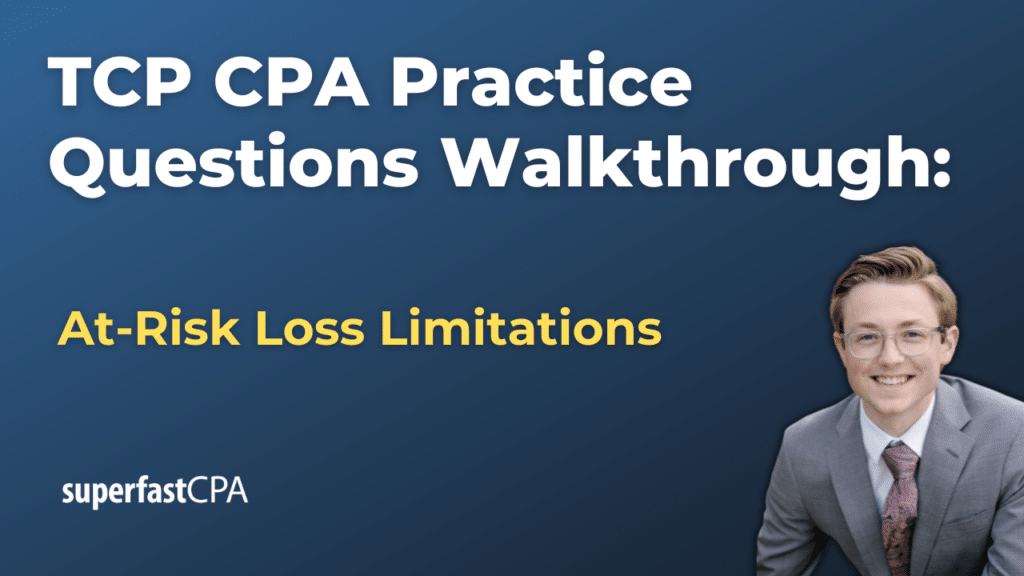In this video, we walk through 5 TCP practice questions teaching about at-risk loss limitations. These questions are from TCP content area 1 on the AICPA CPA exam blueprints: Tax Compliance and Planning for Individuals and Personal Financial Planning.
The best way to use this video is to pause each time we get to a new question in the video, and then make your own attempt at the question before watching us go through it.
Also be sure to watch one of our free webinars on the 6 “key ingredients” to an extremely effective & efficient CPA study process here…
At-Risk Loss Limitations
The at-risk rules, established under Internal Revenue Code Section 465, are designed to limit the amount of loss a taxpayer can claim on their tax return to the amount they actually have “at risk” in a particular activity. These rules are particularly relevant in the context of activities such as real estate, film production, equipment leasing, and other forms of investment which entail substantial financial risk. The purpose is to discourage tax shelters by ensuring that taxpayers can only deduct losses to the extent that they bear economic risk.
What Counts as At-Risk?
At-risk amounts generally include the following:
- Cash contributed to the activity.
- Property contributed to the activity, valued at its adjusted basis at the time of contribution.
- Amounts borrowed for use in the activity, where the taxpayer is personally liable for repayment (recourse loans).
- Certain qualified nonrecourse financing secured by real property used in the activity, provided the financing comes from a qualified person or a government agency.
Items not included as at-risk include:
- Nonrecourse loans, where the lender’s recovery is limited to the collateral pledged for the loan, except as noted above for qualified nonrecourse financing.
- Amounts protected against loss through guarantees, stop-loss agreements, or other similar arrangements.
- Recourse debt that is protected by personal liability insurance. Even though the taxpayer is nominally liable, the existence of insurance negates the risk typically associated with recourse loans, as the insurance would cover potential losses.
Carryforward of Losses
Losses that are not deductible in a tax year because they exceed the taxpayer’s at-risk amount are carried forward indefinitely without expiration. These carried forward losses remain linked to the specific activity from which they arose and can only be deducted against income from the same activity in future years.
Examples
- Example of Real Estate Investment:
- Jane invests $50,000 in a new real estate venture, borrowing an additional $100,000 as a recourse loan that she personally guarantees. However, Jane also purchases personal liability insurance covering the recourse loan.
- Her at-risk amount in the venture is $50,000 (her cash investment), as the insured recourse loan does not count towards her at-risk total.
- If the venture results in a loss of $70,000 in the first year, Jane can only deduct $50,000. The remaining $20,000 is carried forward to future years.
- Example of a Partnership Investment:
- Alex and Bailey invest in a partnership, contributing $30,000 each, and the partnership borrows $40,000 on a nonrecourse basis.
- Their at-risk amounts are each $30,000. If the partnership incurs a loss of $100,000, Alex and Bailey can each deduct only $30,000 this year, carrying forward their respective shares of the undeducted loss ($20,000 each) to future years.
The at-risk rules are crucial for taxpayers and tax professionals to understand as they directly impact the deductibility of losses, thereby affecting taxable income and tax liabilities. Proper documentation and tracking of amounts at risk and the nature of debts associated with investments are essential for compliance and effective tax planning.













